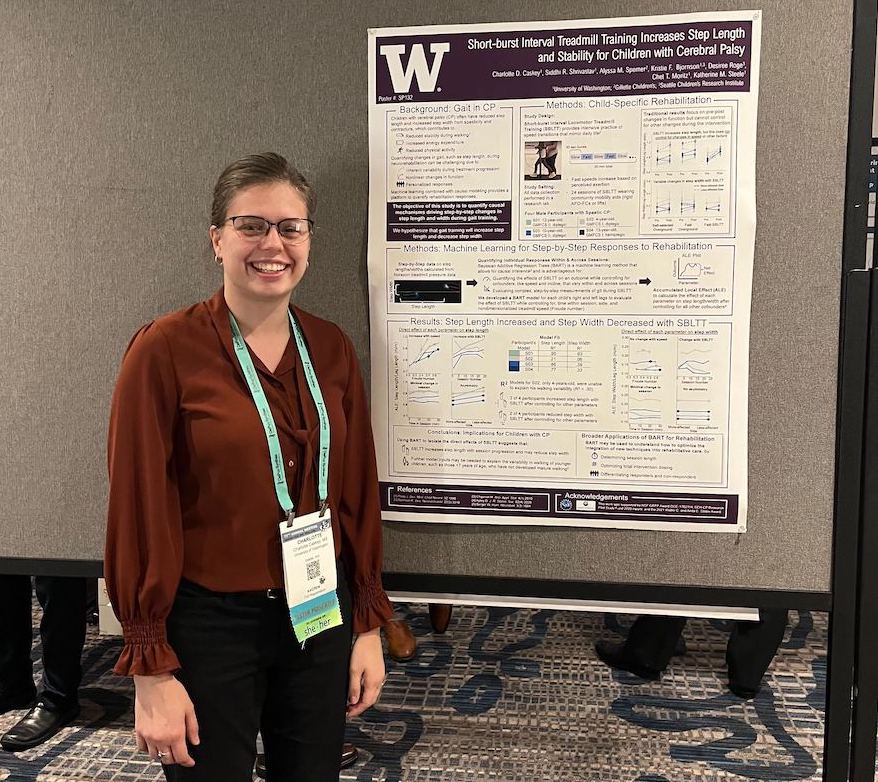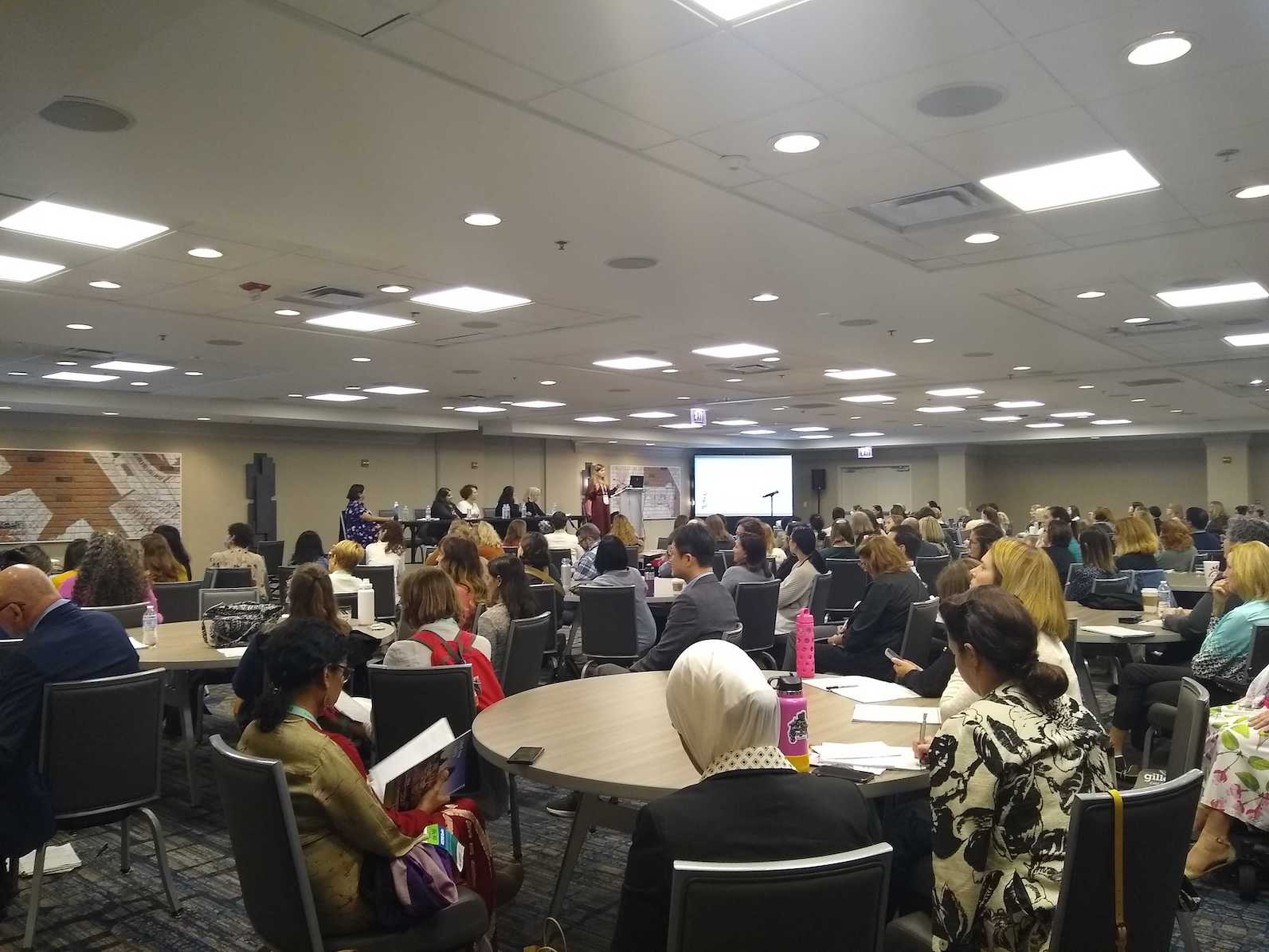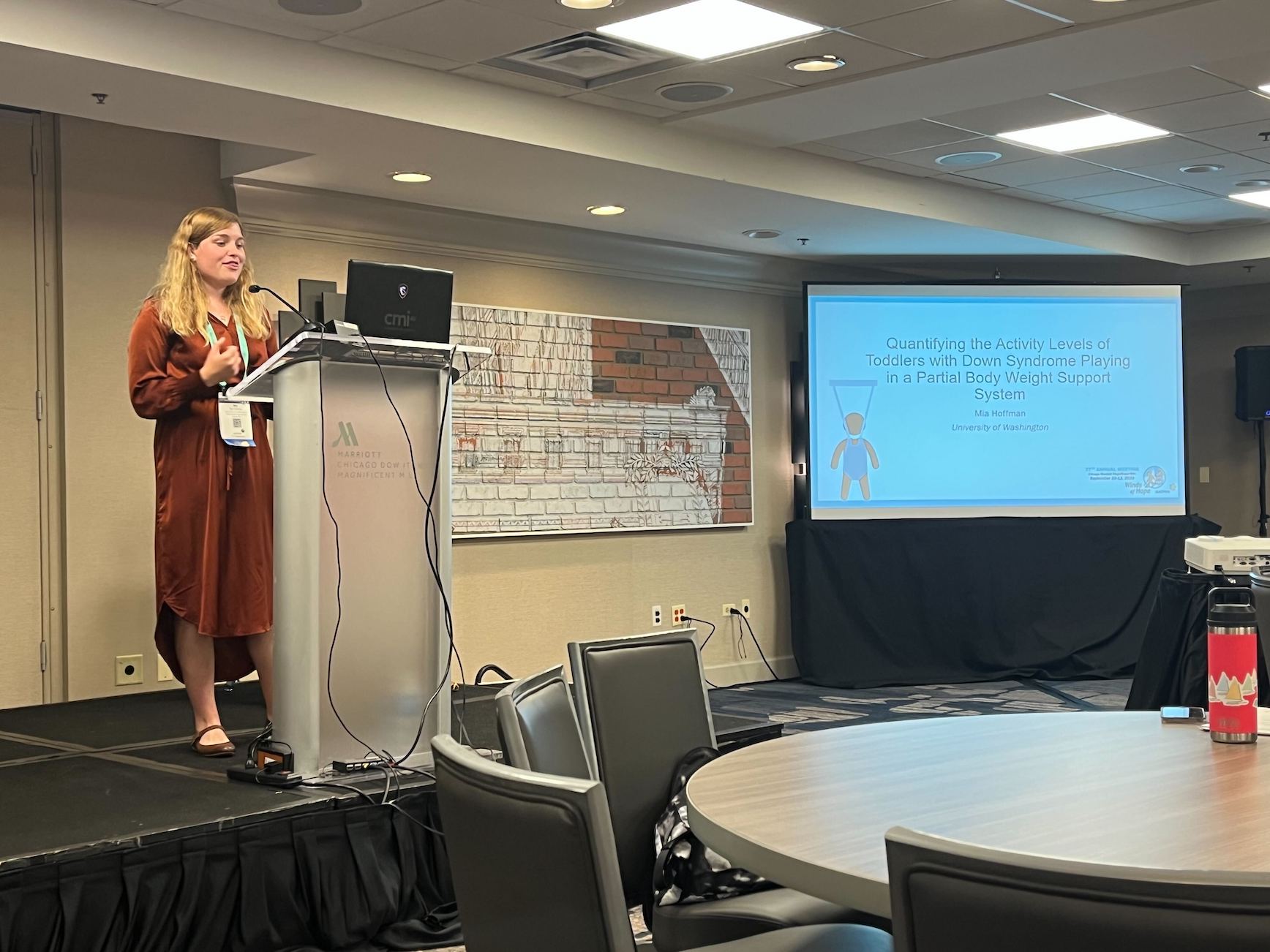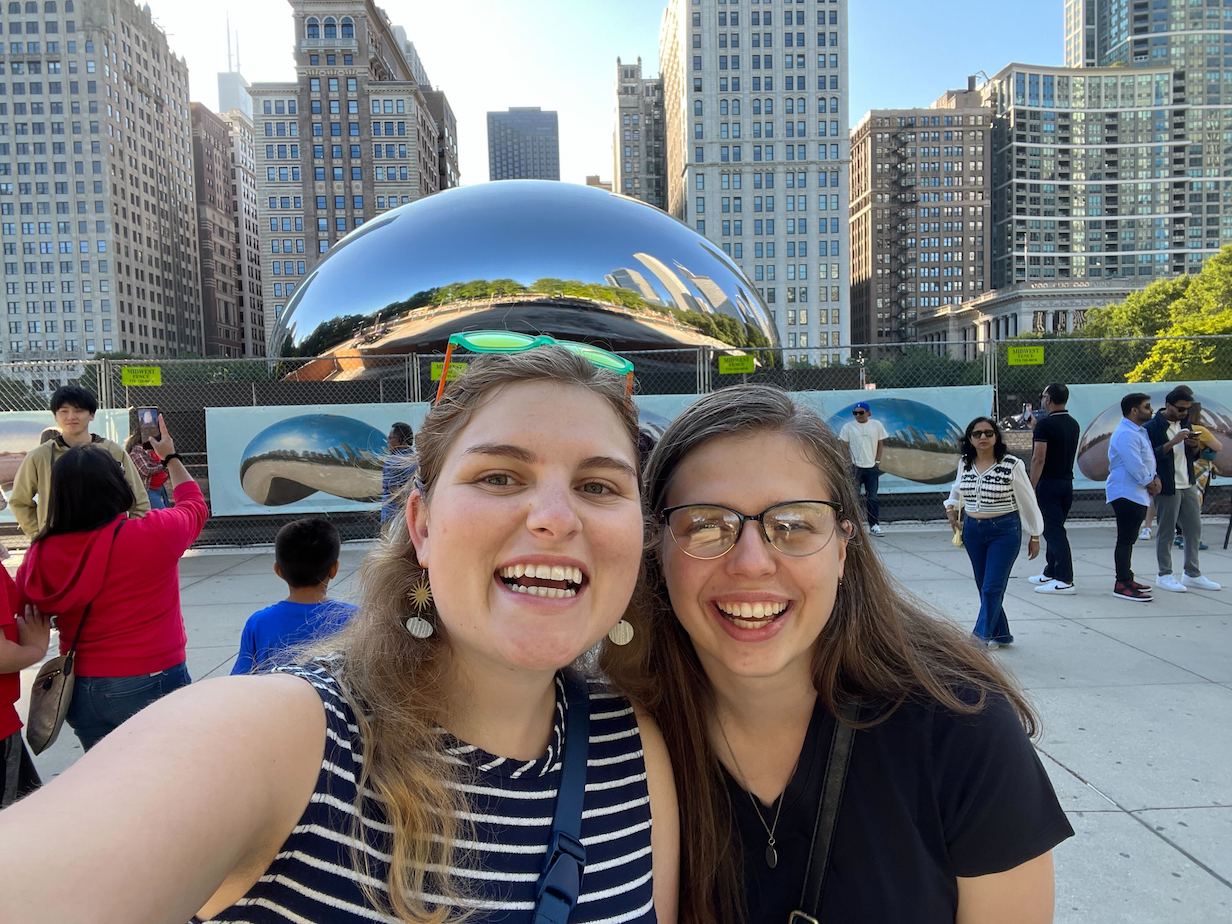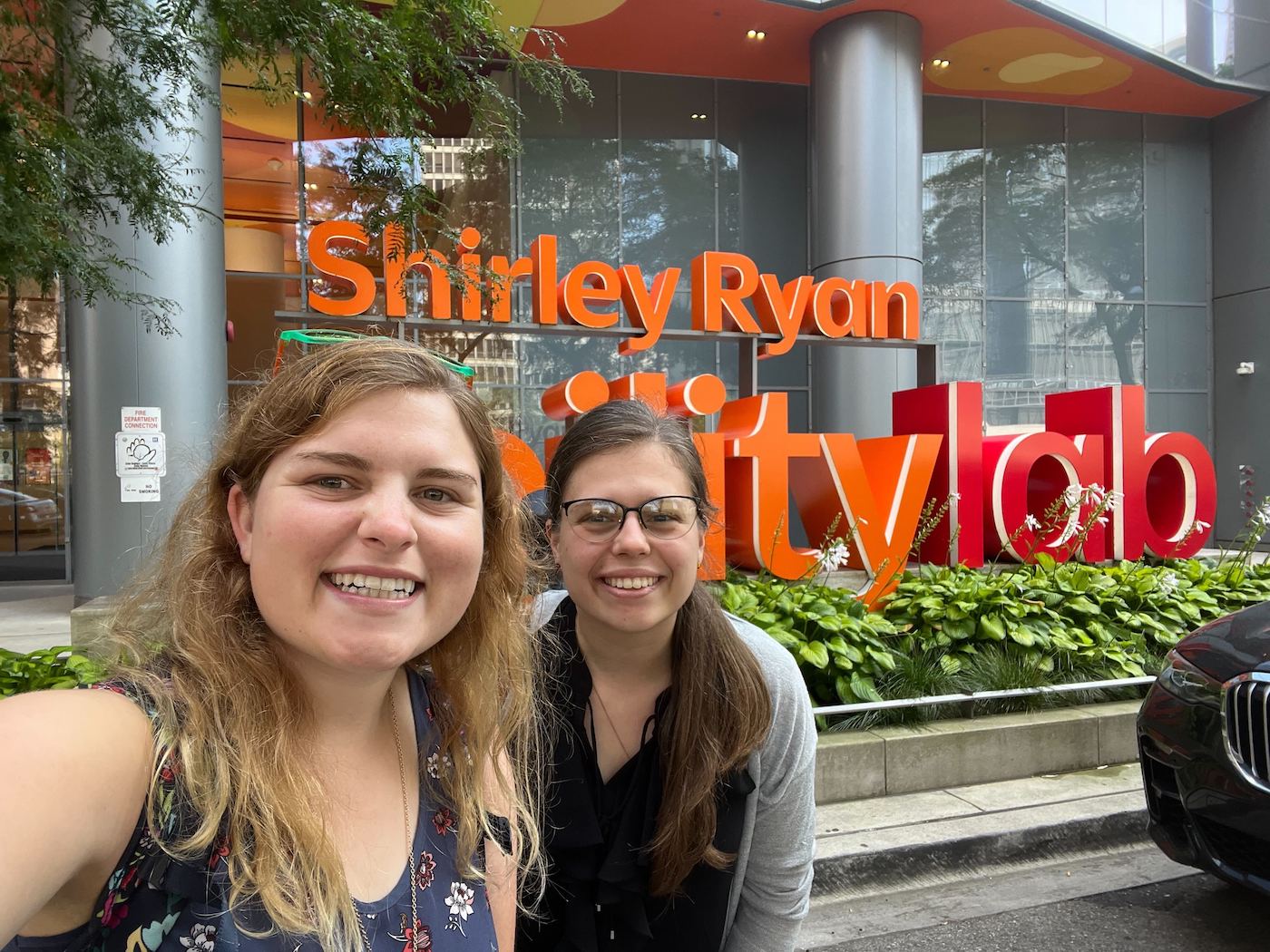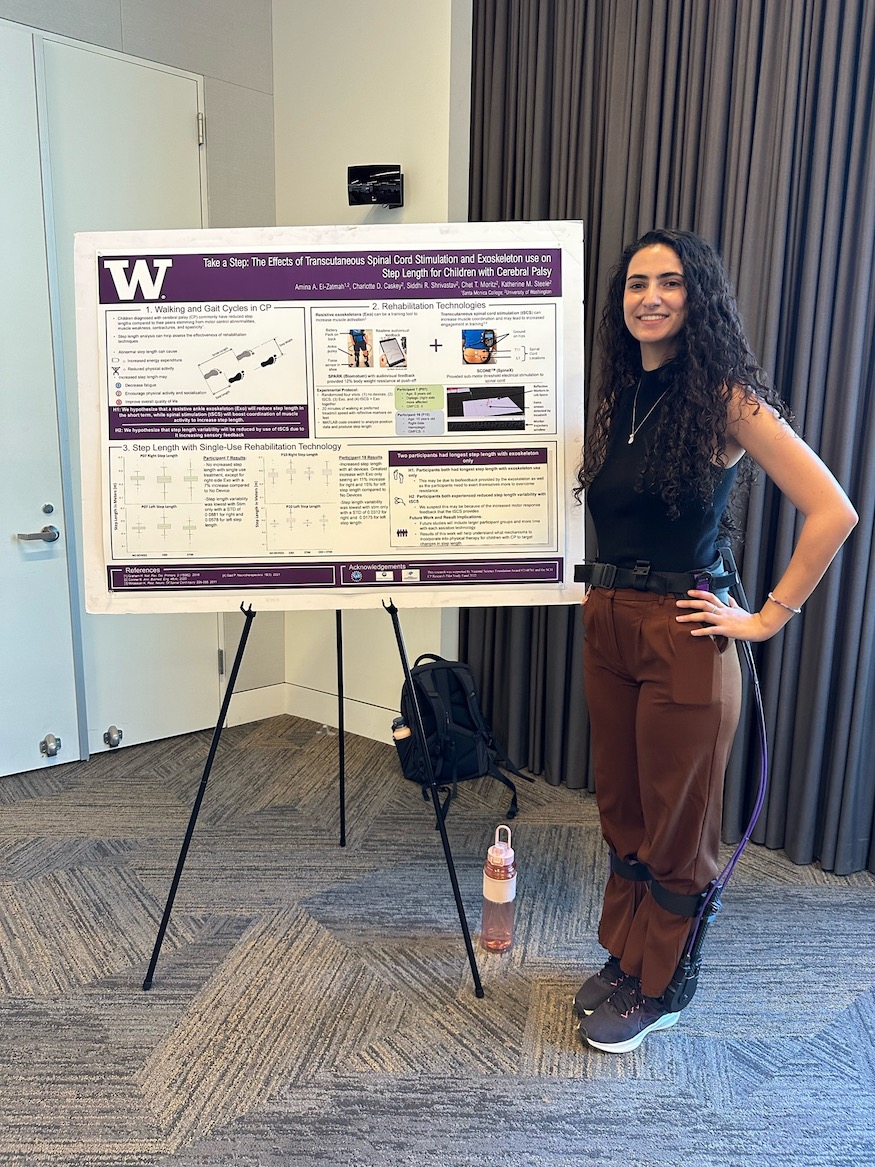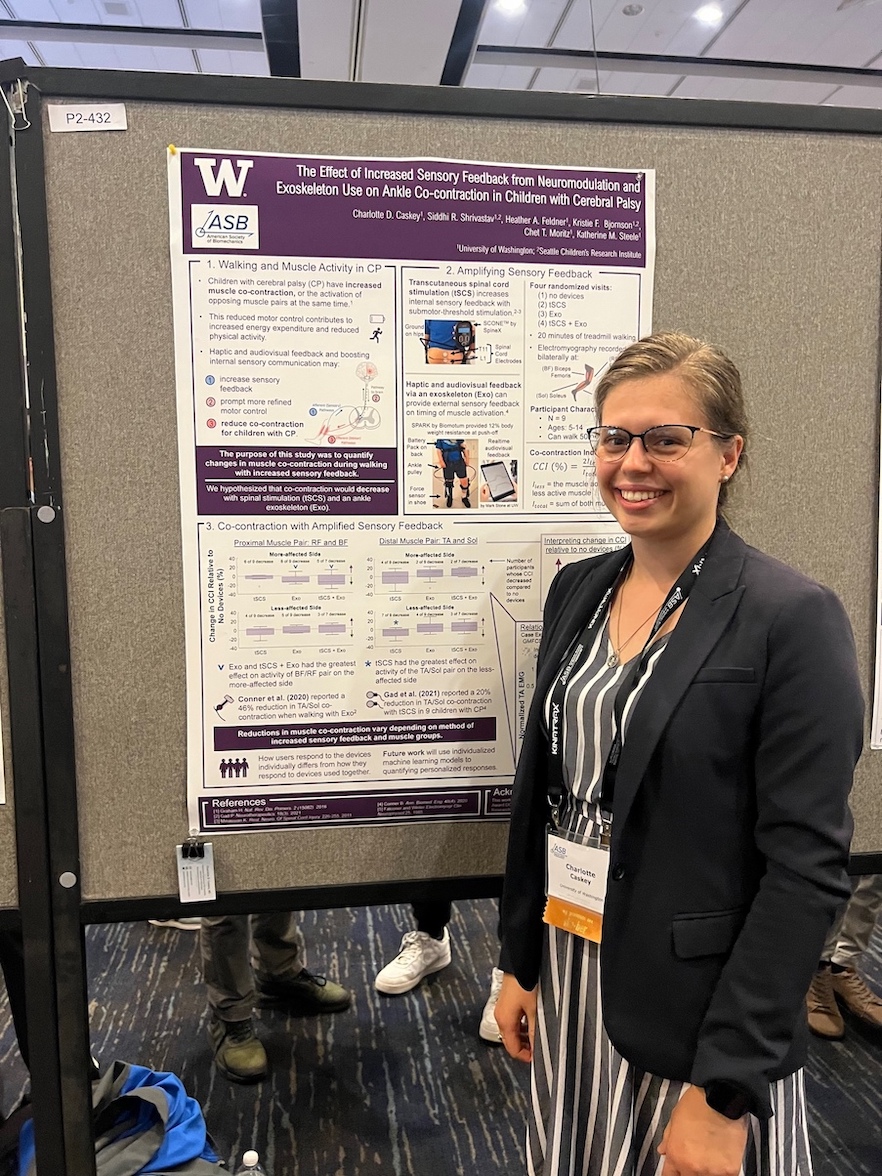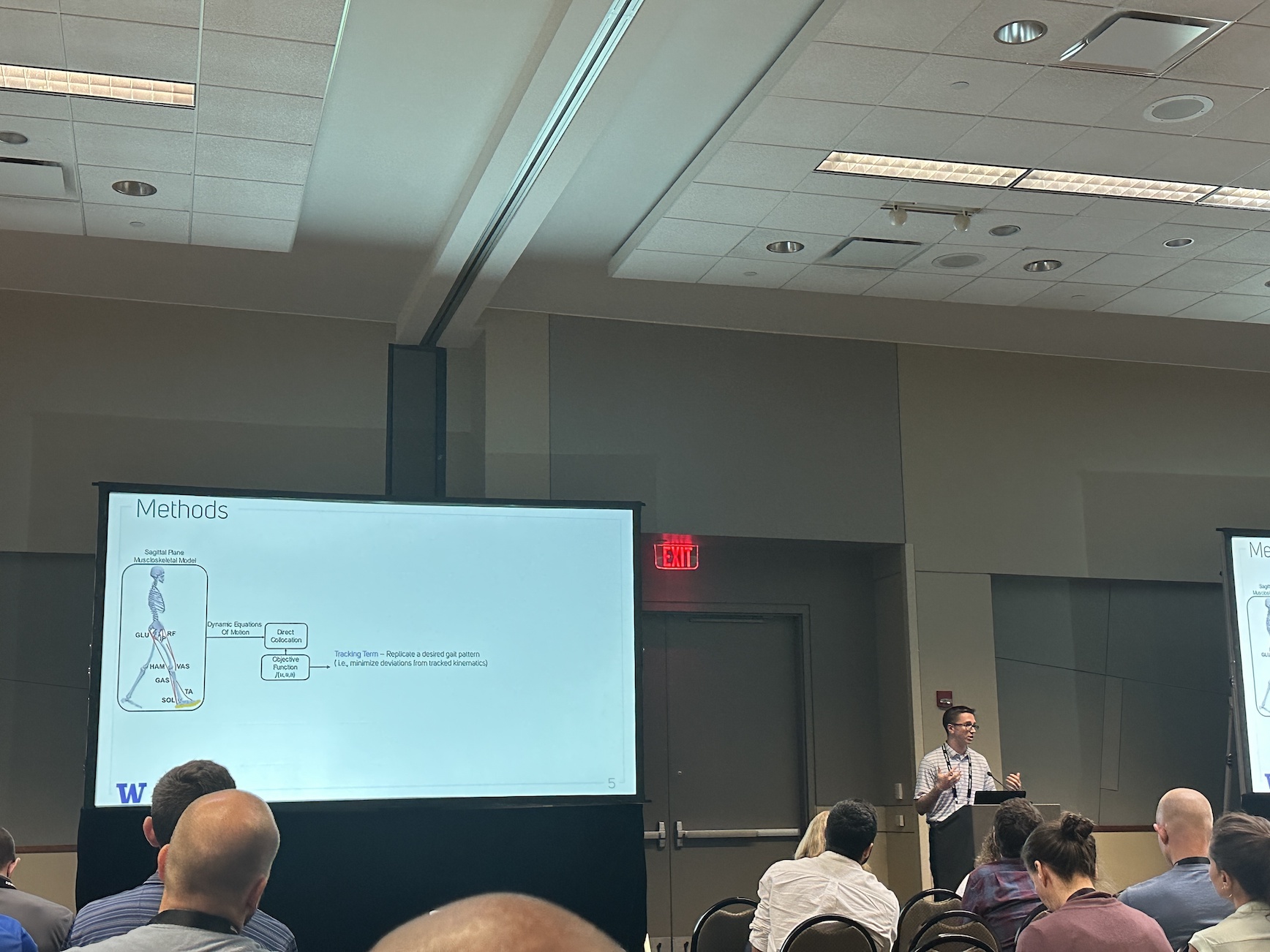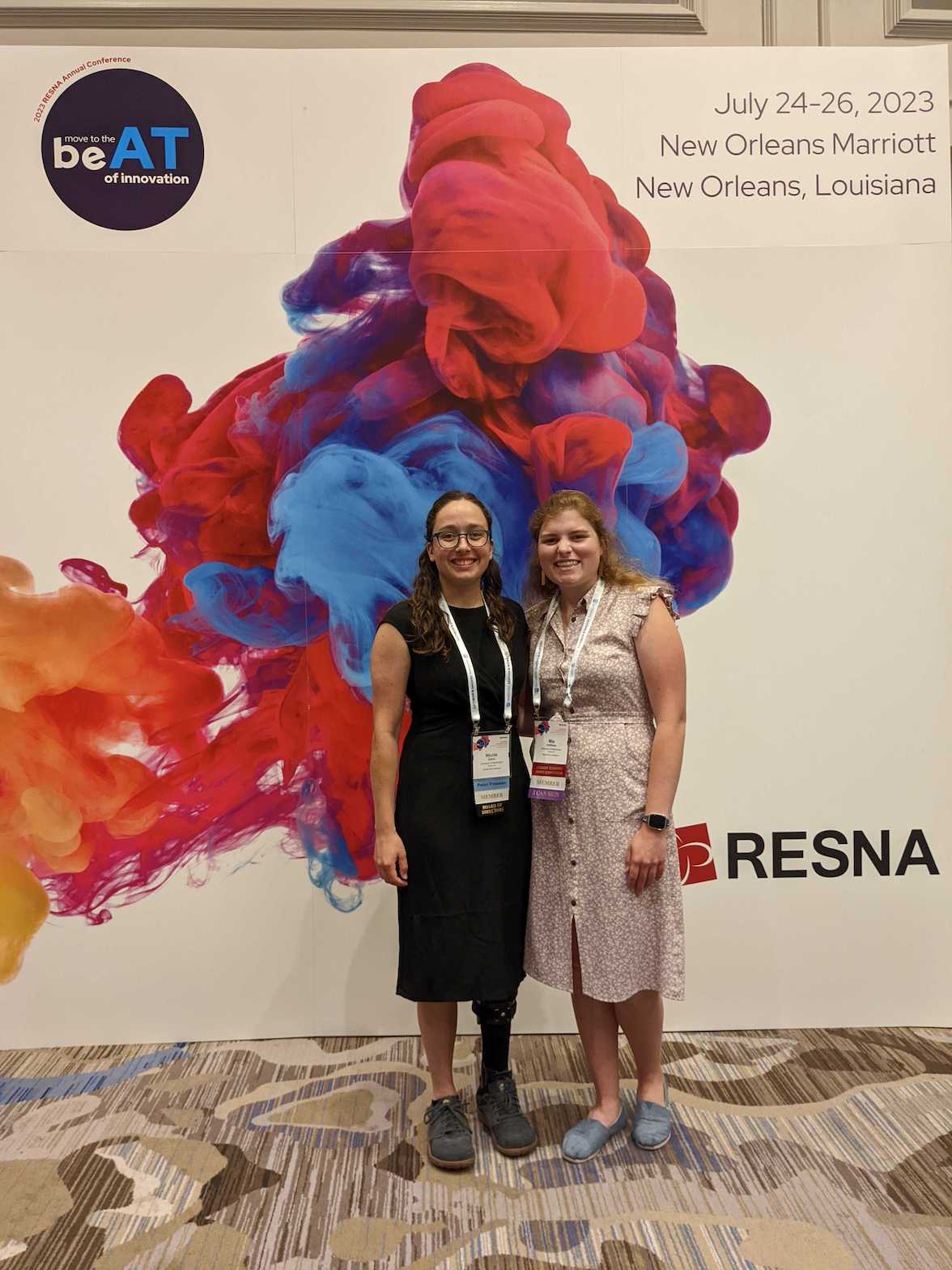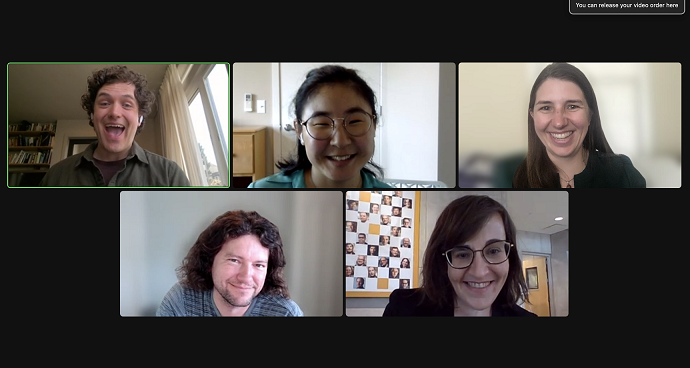Lab members, Charlotte Caskey and Mia Hoffman attended the 2023 American Academy for Cerebral Palsy and Developmental Medicine (AACPDM) Annual Meeting in Chicago, IL on September 10-13, 2023.
Charlotte gave a poster presentation on “Short-Burst Interval Treadmill Training Increases Step Length and Stability for Children with Cerebral Palsy.”
Mia gave a podium presentation during the Early Detection and Diagnosis session on “Quantifying the Activity Levels of Toddlers with Down Syndrome Playing in a Partial Body Weight Support System.“
Great work in the Windy City!
